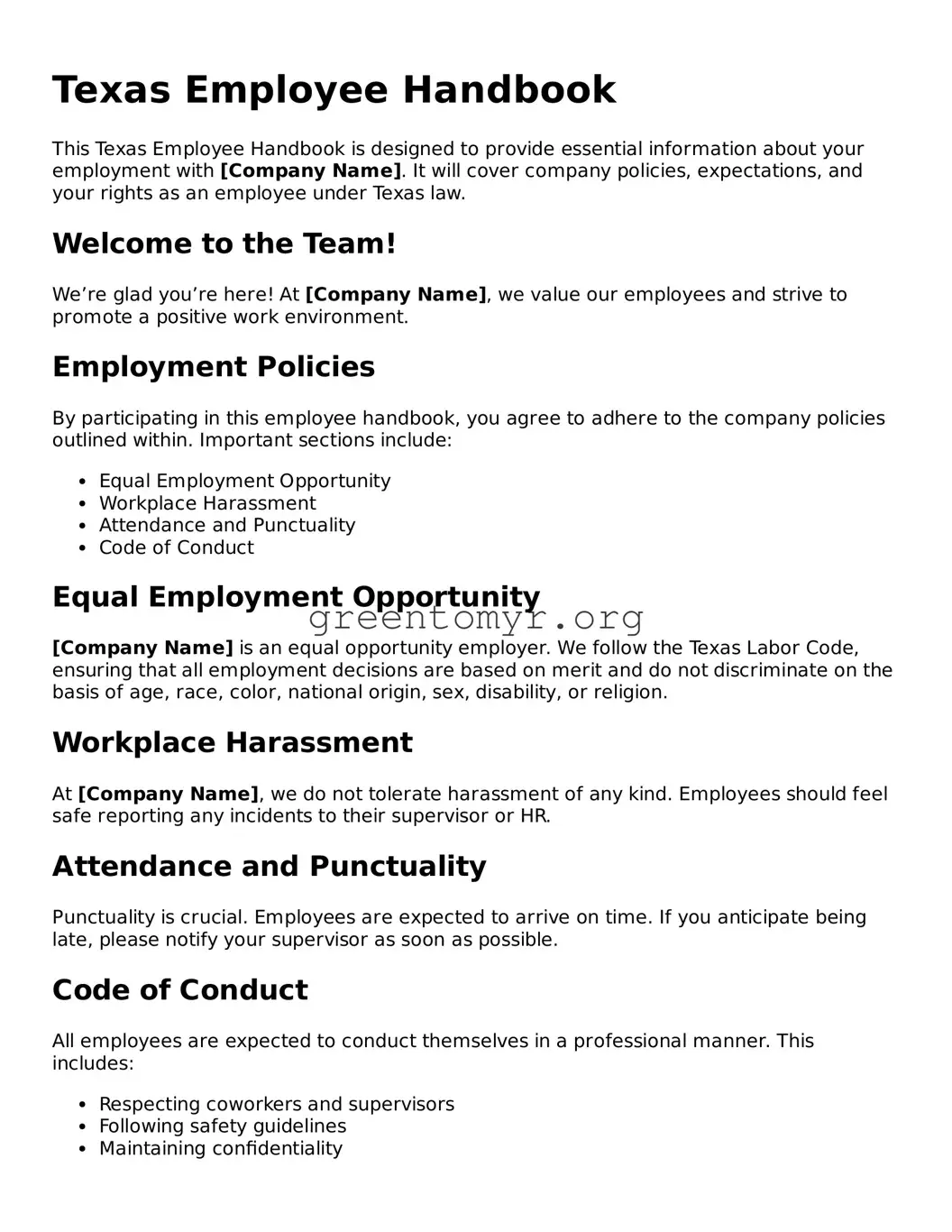Texas Employee Handbook
This Texas Employee Handbook is designed to provide essential information about your employment with [Company Name]. It will cover company policies, expectations, and your rights as an employee under Texas law.
Welcome to the Team!
We’re glad you’re here! At [Company Name], we value our employees and strive to promote a positive work environment.
Employment Policies
By participating in this employee handbook, you agree to adhere to the company policies outlined within. Important sections include:
- Equal Employment Opportunity
- Workplace Harassment
- Attendance and Punctuality
- Code of Conduct
Equal Employment Opportunity
[Company Name] is an equal opportunity employer. We follow the Texas Labor Code, ensuring that all employment decisions are based on merit and do not discriminate on the basis of age, race, color, national origin, sex, disability, or religion.
Workplace Harassment
At [Company Name], we do not tolerate harassment of any kind. Employees should feel safe reporting any incidents to their supervisor or HR.
Attendance and Punctuality
Punctuality is crucial. Employees are expected to arrive on time. If you anticipate being late, please notify your supervisor as soon as possible.
Code of Conduct
All employees are expected to conduct themselves in a professional manner. This includes:
- Respecting coworkers and supervisors
- Following safety guidelines
- Maintaining confidentiality
Benefits
[Company Name] offers a range of benefits. These may include health insurance, retirement plans, and paid time off. Detailed information can be found in your benefits packet.
Employee Rights
In Texas, employees have certain rights regarding labor practices. Familiarize yourself with these rights and feel free to reach out to HR if you have any questions.
Policy Changes
This handbook is subject to change. Employees will be notified of any updates or revisions. Acknowledge that it’s your responsibility to stay informed on new policies.
If you have any questions or need clarification regarding any of the content within this handbook, please reach out to [HR Contact Name] at [HR Contact Information].
Welcome to [Company Name]! Let’s achieve great things together!
